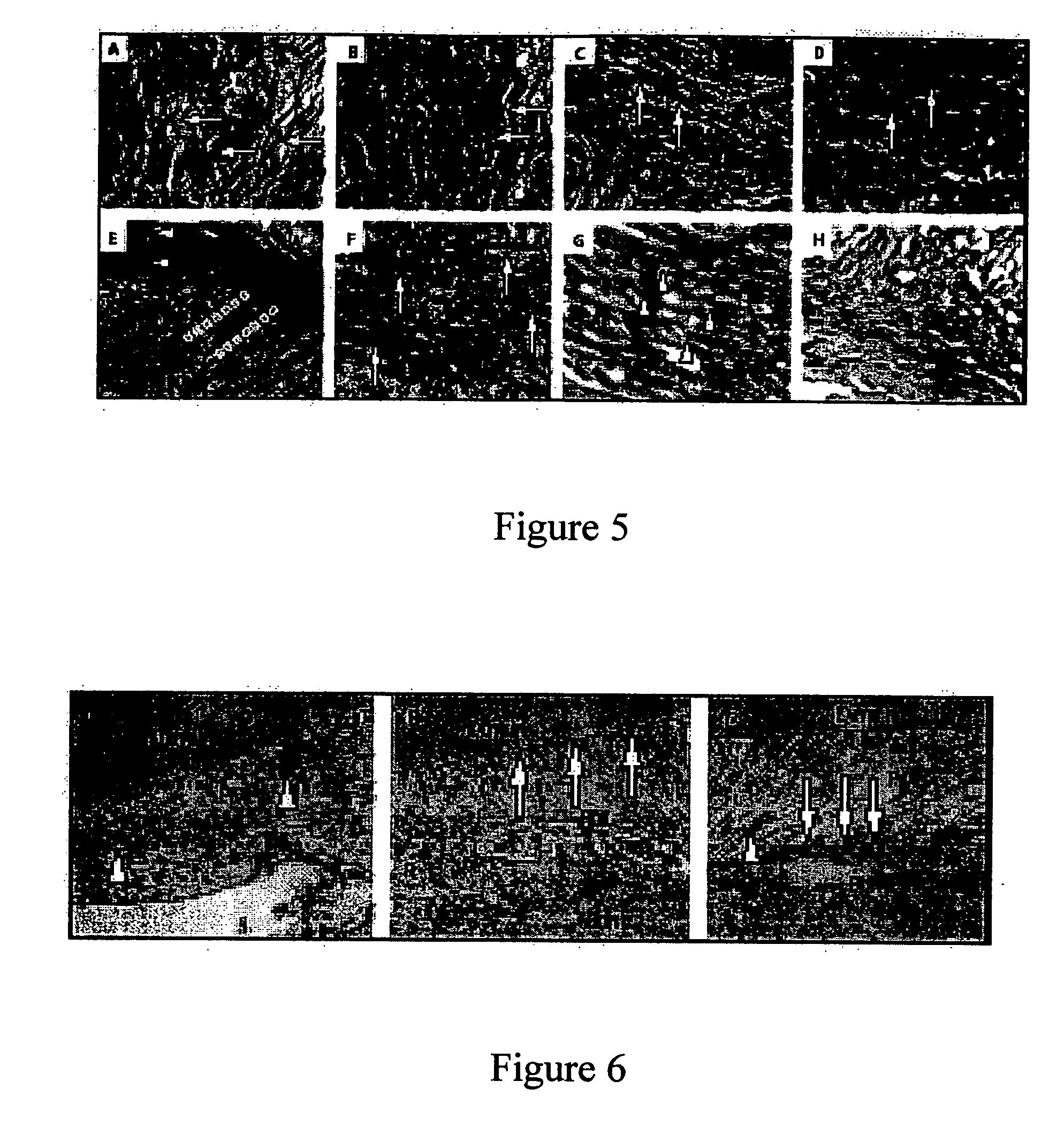Multipotent postnatal stem cells from human periodontal ligament and uses thereof
- Summary
- Abstract
- Description
- Claims
- Application Information
AI Technical Summary
Benefits of technology
Problems solved by technology
Method used
Image
Examples
example 1
Isolation, Characterization and Use of PDLSCs
Materials and Methods
[0106] Samples and Cell Culture
[0107] Normal human impacted third molars (n=25) were collected from 16 individuals (19-29 years of age) at the Dental Clinic of the National Institute of Dental & Craniofacial Research, USA, following approved guidelines set by the National Institutes of Health Office of Human Subjects Research. Periodontal ligament (PDL) was gently separated from the surface of the root and then digested in a solution of 3 mg / ml collagenase type I (Worthington Biochem, Freehold, N.J.) and 4 mg / ml dispase (Roche, Mannheim, Germany) for 1 hour at 37° C. PDL samples from different individuals were pooled and single-cell suspensions were obtained by passing the cells through a 70 μm strainer (Falcon, BD Labware, Franklin Lakes, N.J., USA).
[0108] To identify putative stem cells, single-cell suspensions (1 to 1×104 cells) were seeded into 10-cm culture dishes (Costar, Cambridge, Mass.) with alpha-modif...
example 2
Recovery of Functional Postnatal Stem Cells from Cryopreserved Human Mesenchymal Tissues, Such as Periodontal Ligament
Introduction
[0141] Postnatal stem cells have been successfully isolated from a variety of human tissues including bone marrow, peripheral blood, neural tissue, skeletal muscle, epithelium, dental pulp, and periodontal ligament(Bianco and Robey, 2001; Evers et al., 2003; Gronthos et al., 2000; Korbling and Estrov, 2003; Seo et al., 2004). With recent advances in stem cell therapies and tissue engineering, the effective preservation of stem cells is an issue for stem cell-mediated clinical treatment (Korbling and Estrov, 2003). Cryopreserved hematopoietic stem cells have been utilized for disease treatment in clinics for decades. Recently, it has been reported that hematopoietic stem cells can be successfully used for stem cell transplantation following 15 years of cryopreservation (Broxmeyer et al., 2003), suggesting long-term cryopreservation is a reliable approac...
PUM
 Login to View More
Login to View More Abstract
Description
Claims
Application Information
 Login to View More
Login to View More - R&D
- Intellectual Property
- Life Sciences
- Materials
- Tech Scout
- Unparalleled Data Quality
- Higher Quality Content
- 60% Fewer Hallucinations
Browse by: Latest US Patents, China's latest patents, Technical Efficacy Thesaurus, Application Domain, Technology Topic, Popular Technical Reports.
© 2025 PatSnap. All rights reserved.Legal|Privacy policy|Modern Slavery Act Transparency Statement|Sitemap|About US| Contact US: help@patsnap.com



